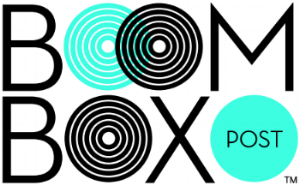The power of the modern digital audio workstation (DAW) is easy to take for granted these days. DAWs give us the power to sound design, edit and mix all from the convenience of an affordable consumer laptop. That obviously was not always the case. From the days of razor blades and magnetic tape, audio post-production tools have gone through major transformations over several decades. Here's a glance at a few eras that laid the groundwork to reshape how we approach sound editorial and mixing today.
Pre-Digital Era: Splicing by Hand
Before the arrival of digital tools, sound editing and mixing workflows were entirely analog, physical processes. Dialogue, sound effects and music were edited by literally cutting and taping segments of magnetic film (mag stock) or reel-to-reel tape by hand with razor blades. Sound for major films like Star Wars (1977) and Apocalypse Now (1979) were edited and mixed using these techniques which required intense precision and patience. Mix sessions were performed live on large-format consoles like the Harrison PP-1, requiring multiple mixers (often 3-6) riding faders in real time, with no room for error and no undo button.
Digital Has Entered The Chat
By the 1980s, digital technology began to creep into post-production workflows. Samplers, digital multitrack machines and early digital editors like the Synclavier and Fairlight CMI gave sound teams more precision and flexibility. These systems offered groundbreaking capabilities:
Digital sampling for instant recall allowed for speed and flexibility when auditioning sounds against picture.
Pitch and time manipulation gave designers and editors the ability to pitch shift and time stretch, warping recordings in creative ways or adjusting ADR sync.
Visual interface and waveform displays gave users the ability to interact with audio visually and laid the groundwork for the interfaces of modern DAWs.
Sound Library Management systems allowed for storing and organizing hundreds of sounds that could be labeled and recalled.
These tools were very expensive systems originally designed as high-end music workstations. They were used to supplement post-production workflows but did not completely replace the current analog mixing workflow. It wouldn’t be for a few more years until we saw the conception of digital audio workspaces that resemble the tools we use today.
The Dawn of Modern DAWs
In 1989, Digidesign released Sound Tools. It allowed for two-track editing on a Macintosh computer and was marketed to musicians and recording engineers as "the first tapeless studio." Although it offered nonlinear editing, the interface was not a multitrack timeline sequence. Sound Tools may have found its way into niche post-production tasks like music editing or conforming film mixes to TV spots and trailers, but its role in film came later once it had evolved into Pro Tools.
Pro Tools 1.0 was launched in 1991 as a 4-track, timeline-based editor that quickly gained serious attention from post-production professionals.
It introduced revolutionary features:
A timeline based sequence, clear and visual, allowed for multitrack audio layering and arranging with a time ruler.
Nondestructive editing meant for the first time, editors could cut, trim and rearrange clips without altering the original audio files.
Graphical Waveforms were displayed for every clip, giving editors visual representations of the audio which made it easer for syncing to picture and identifying sounds.
Built to run on personal Macintosh computers, made it much more accessible than the expensive all-in-one hardware systems like Synclavier or Fairlight.
This was a radical shift from physical tape editing to a flexible, nonlinear workflow that would soon become the backbone of both music and post-production. It would still take time for film mixers to fully transition from analog consoles to in-the-box Pro Tools workflows, but this was what set it all in motion. What started as a modest 4-track editor in 1991 has since grown into the industry standard for sound editing and mixing for film and television!
If you enjoyed this blog, check out these:
THE EVOLVING WORLD OF CINEMA SOUND
THE HISTORY OF FOLEY
THE EVOLUTION OF THREE DOLBY ATMOS STAGES




